ScreenFonts: Public Enemies, Brüno, I Love You Beth Cooper, Soul Power, In The Loop

It's summer, the sun's out, and it's hot. While we Belgians have the foolish reflex of exposing ourselves excessively to the blistering sun, in the southern European states people go to the movies and enjoy the air conditioning in the theatres. The former increases the risk of skin cancer, the latter is detrimental to the environment, so essentially… we're buggered. Well, the alternative is sitting in one's attic office bare-chested and sweating, with the big window open, and typing away at a new episode of ScreenFonts, discussing the posters of the aforementioned movies instead of simply enjoying them. Eat this, people on holiday having a leisurely time!
I sometimes am disappointed and even put off by inconsistencies in movie branding. Not only do localised versions of movie posters often do the original movie logo injustice by switching the typeface for no apparent reason. It also happens that within one single campaign the typefaces erratically change between the various campaign media. The poster looks different from the website, which looks different from the trailer, which looks different from the banner ads, which look different from the print ads, … I guess you catch my drift. However there are also examples where they do get it right, and in some rare instances even go as far as create a custom typeface for all branding and communication surrounding a movie.


One such instance is the new Michael Mann blockbuster Public Enemies, which uses the same typeface for the movie poster as for all other media. The custom designed "New Deal" trio of fonts was created by graphic design icon Neville Brody and Jeff Knowles of Research Studios. The duo collaborated previously on two other Mann projects, designing bespoke typefaces for both Heat and The Insider.
Public Enemies is set during America's Great Depression, and the typeface strongly references this period. The design is informed by diverse influences: from New Deal graphics to the curves and forms of stream trains, car and architecture of the period, as well as from the associated promotional work program posters, some of which were put together by the Works Progress Administration. Echoing the typography in the posters of that era, the typeface is deliberately naive in its design. It is a simplified, square design: the lack of optical correction giving it an odd vertical stress.

Neville Brody explains on The Guardian website:
Michael Mann understands the power of a good title sequence and always commissions his own. For Public Enemies, he wanted a font that evoked the Depression era, so I got inspiration from publicity posters for Roosevelt's New Deal initiative, which promoted economic relief after the 1929 Wall Street collapse. They're designed in a very constructivist, Soviet, communist style. My font is very solid, clearly masculine, immovable, and it has some very specifically naive details, like the way the horizontal strokes are all slightly too wide – we've taken out the optical correction. And if you look at the 'B' you'll see that the holes in the middle are a little bit too small – they look like bullet holes – which is very apt.
For a more in-depth examination of the New deal typeface read the exclusive interview with Jeff Knowles (in English) on Visualmente, Argentinian Norberto Baruch's blog. Creative Review also ran a summary feature on the typeface.
Stills from the Public Enemies trailer from Research Studios on Vimeo.
It's a shame this approach is rather the exception than the rule, because the consistent look of this campaign definitely is an added bonus. The typefaces play a crucial role in branding the movie, making every element instantly recognisable. Research Studios succeeded in achieving the specific look they were aiming for, and the type looks really good, with an architectural feel and a very pronounced rhythm, both in print and on screen. With regards to the posters an almost monochromatic look was achieved by colourising black and white images of the actors with a limited colour palette. This strengthens the overall atmosphere of the campaign.
The strict geometry makes this typographic style a perfect candidate for FontStructing, which is exactly what our very own Stephen Coles did with his WPA Gothic. For other typefaces of this style check out Futura Display, FF Moderne Gothics, Refrigerator, and MVB Solano Gothic.
Now for a complete change of pace. Brüno is the third big screen iteration of a Sacha Baron Cohen character. After the moderately funny Ali G Indahouse and the outrageous Borat: Cultural Learnings of America for Make Benefit Glorious Nation of Kazakhstan, now is the turn for the flamboyant Austrian fashion reporter. The movie trailer looks very promising; I only hope it's not one of those that has all the funny bits, and the rest of the movie is filler. And no – I do realise Brüno is not supposed to be a faithful representation of gay people. Just as Borat wasn't a genuine Kazakhstan reporter. Of course as a straight white man I've never had to fear for my life for my sexual orientation, so I may be a poor judge when it comes to the negative backlash this movie may well inflict on the gay community. When discussing this with the sharp-witted David John Earls I asked if the problem wasn't simply that some people are just too stupid to not realise it's all but a joke. This prompted his thought-provoking reply:
I am sure that in some way [Sacha Baron Cohen] is being terribly clever in his "work"; however, the vast majority of people aren't going to get his in-joke, and they're going to let it reaffirm their own actual prejudices. So the question is, does he have a responsibility to society in general, or just to clever people? As a rich white man, he won't have to deal with the consequences of his actions other than to spend the cash.
Politics notwithstanding we're still going to take a look at the movie poster. The references to fashion and the exuberance of the star of the movie provide lots of potential material to work with. The main poster with its bright yellow colour and striking symmetry works really well, and even that tired old Helvetica kind of fits because it is so ubiquitous in graphic design and advertising for fashion (although most often in its anemic incarnation). I like that tag line – a pretty obvious one but it does its job perfectly.
The self-referential localised German language version does a pretty good job at breaking the fourth wall. Brüno looks knowingly at the viewer while hanging up his own poster within the poster. One could even interpret Brüno's look in that poster within the poster as breaking the fourth wall within the fourth wall, as it seems as if he's surprised to realise we are watching him in the poster being hung up in the poster. By himself no less. So that must be the eighth wall – two times four – to be broken. Unless it's the sixteenth wall – four squared. Or something like that. (I fear the heat is finally doing my head in).
There's also an Asian version of the poster that spoofs the iconic American Beauty image. Brüno does a bright yellow impression of Mena Suvari lying on a bed of flowers. It's a shame the type on that poster is all over the place – literally.
It seems like every edition of ScreenFonts features a movie poster with hand drawn type. This month I Love You Beth Cooper upholds this tradition. Conceptually it fits: the background of the poster looks like page in a school notebook, with doodles drawn on it. The hand drawn movie title does a successful impression of a custom shaded Gill Sans Ultra Bold, and the simple design and colour scheme are quite effective.
The movie poster for Blood: The Last Vampire is a bit of a missed opportunity. Instead of using the omnipresent movie typeface Trajan and custom setting the double-O ligature, they could have opted for a face with properly designed and optically corrected capital ligatures like Capsa or Mrs Eaves for example. Although the poster design is standard martial arts/action movie fare, the drop of blood in the intersection between the two Os is a nice typographic detail.
Soul Power has a picture-perfect movie poster recalling the funky seventies. It is the companion movie to When We Were Kings, the award-winning documentary of the 1974 heavyweight championship bout in Zaire between champion George Foreman and underdog challenger Muhammad Ali. Soul Power focuses on that other great event – the music festival that was to concur with the Rumble In The Jungle. The design and typography beautifully translate the movie to print. A very bold, slightly awkward hand drawn geometric display sans nicely embodies both the time period and the subject, and the soon-to-be centenary Hobo is a good choice as secondary face. Adding the folds and wrinkles enhances the authentic feel, as if it were a genuine poster from 1974 that had been stored folded and only recently resurfaced. Very nice atmosphere.
Now this is a surprise. At first glance one would think this to be Helvetica, but no. The offbeat romantic comedy (500) Days of Summer proudly wears Scout on its poster, Cyrus Highsmith's type family which he drew (as well as the related logotype) for Geraldine Hessler's 2006 redesign of Entertainment Weekly. The secondary typeface, similar to architect's lettering, resembles Graphite. The poster itself looks really nice, with a yellow sun motif on blue background, composed from a multitude of colourised photos of the female lead Zooey Deschanel. And true to the trend there are some hand drawn elements on this poster as well.
I'll tell you what's wrong with Esther on the movie poster for Orphan. Half of her face was mirrored, revealing her evil inner side. Et voilà, done, — no need to see this "formulaic, sleazy horror/thriller". I just saved you two valuable hours of your life. Oh yes, there's some condensed DIN at the top and bottom, and you'll find a number of similar scratchy faces in the Sketched, Scratched, Scribbled FontList.
Don't ask me why, but I really like the movie poster for Shrink. I have no rational explanation for it, because for starters the typography is not good. All lowercase Georgia with Helvetica? Lame… The image itself is a bit cheesy as well, with the palm trees on both sides and the skyline straight out of an 80s movie. I think it must be Kevin Spacey, how he nested himself on that designer deck chair. Even in a still image his acting is superb, and in a single glance the viewer detects a whole range of emotions and associations. Damn, he's so good the sun is literally shining out of his arse. Imagine that.
Two weeks ago I received an e-mail from our reader Simon Robertson, suggesting I should take a look at the movie poster for In The Loop. Indeed it is a great poster, referencing the signature style of one of the great masters of the last century – Saul Bass. It uses a simplified visual language, revealing with a minimum of means the subject of the movie in a single illustration. The two silhouettes – each with a tie, one a union jack and the other a stars and stripes – and the tangled cord of the cup telephone are beautifully executed concepts. The movie logo cut out in paper as well as Alternate Gothic harmonise perfectly with the vintage graphic style.
As for the character posters – I don't know, they seem gratuitous to me. It's a bit of a stretch making a connection with Barack Obama's recent electoral campaign through the appropriation of the iconic poster by Shepard Fairey. Maybe I'm missing something. And I just hate they used Helvetica in these versions.
Adam has a quiet, airy, and elegant movie poster. Its blueish, slightly off colour subtly hints a the skewed perception of the world by the lead character who has Asperger's Syndrome. The delicate blue of the tagline nicely complements the pristine look of Bodoni. And the starry sky filling the characters of the poetic movie logo is a clever reference to Adam's fascination with space and astronomy.
The last movie poster in this month's episode is for Park Chan-wook's Bkjwi (Thirst). It is a very sensual design. The protagonists' bodies are interlocked in an intriguing symmetric pose, with only their faces and select body parts emerging from the black. The image strikes a precarious balance between seduction and aggression, exerting a mesmerising attraction on the viewer. The red (and white) Korean calligraphy adds the finishing touch to this beautiful poster.
Now you'll have to excuse me, but the cleaned up (US?) version is outright ridiculous. Why did the woman's naked legs have to disappear? Was her pose deemed offensive? Well, it certainly is a lot tamer than any mainstream hip hop video currently shown on television. Plus the typography is quite poor as well. Instead of trying to turn the capital Ts of the grossly overused Trajan into crosses, they should have used Jonathan Barnbrook's Mason, which has those glyphs built in, and whose "tone of voice" is perfect for this kind of application.

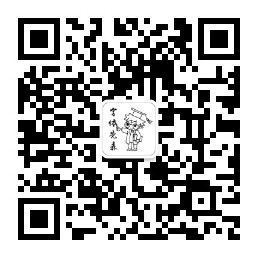




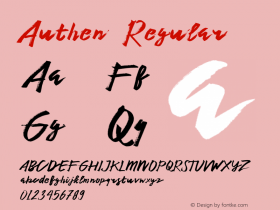













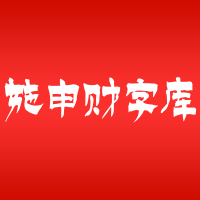
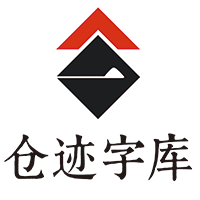

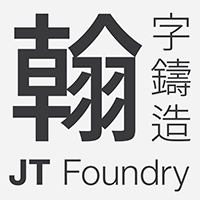
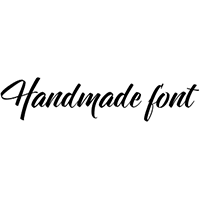
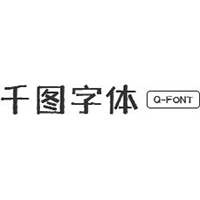
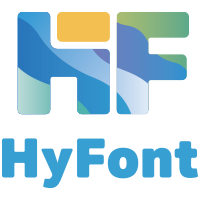
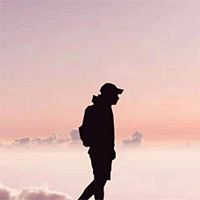

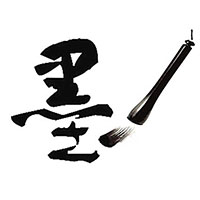





 闽公网安备35010202000240号
闽公网安备35010202000240号